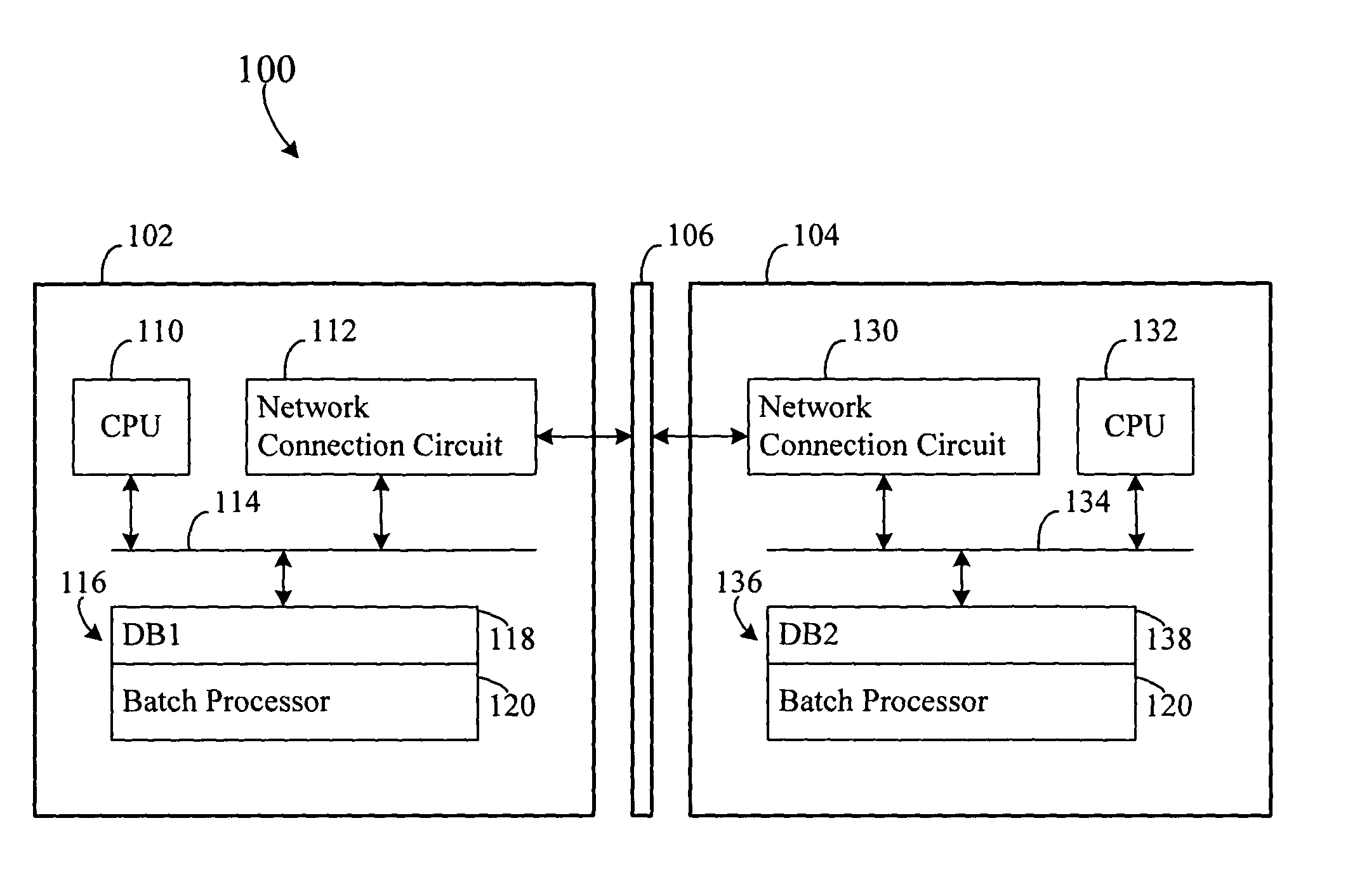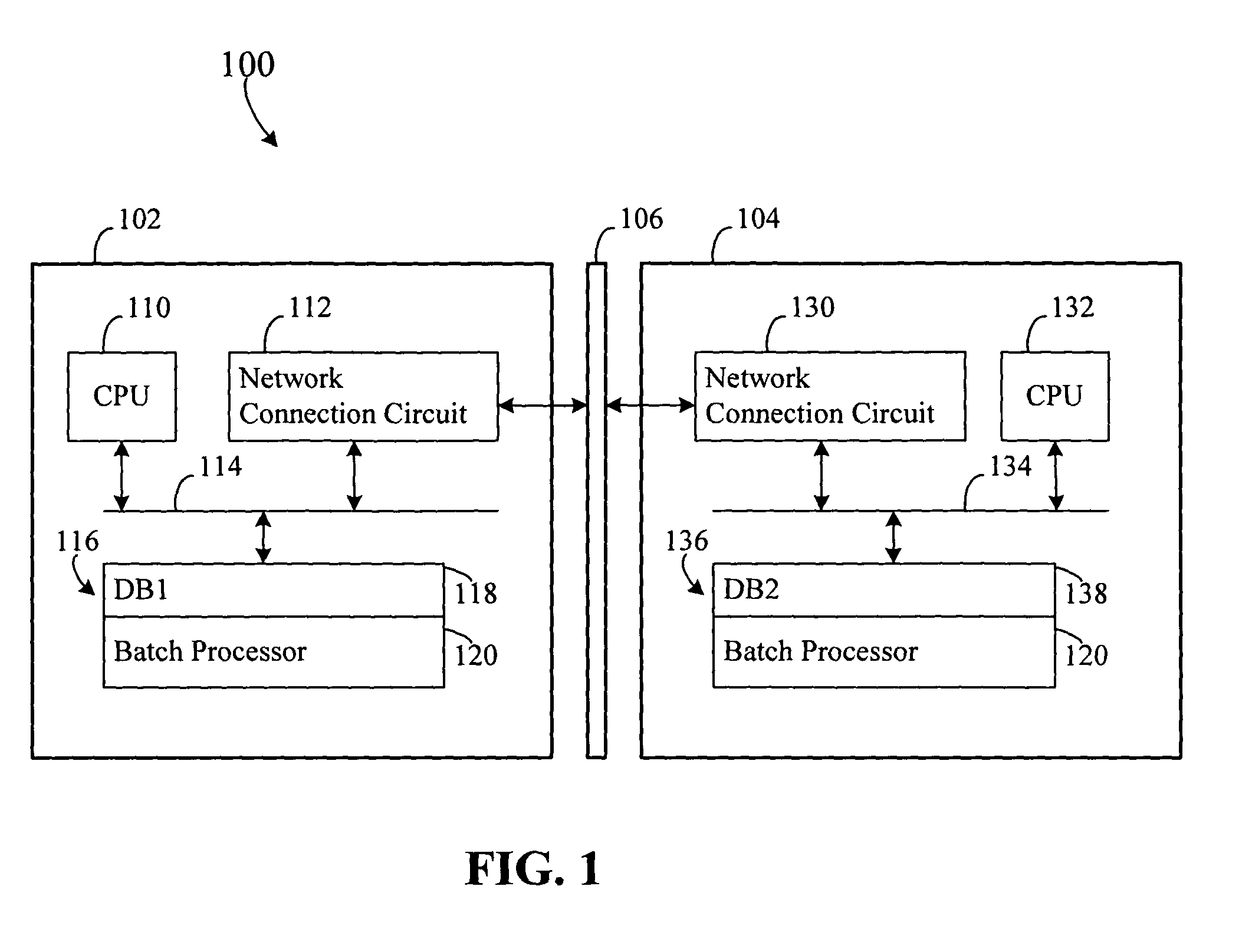Method and medium for combining operation commands into database submission groups
a technology of operation commands and database submissions, applied in the field of method and medium for combining operation commands into database submission groups, can solve the problems of inability to meet the requirements of database submissions, violate the “, and undesirable traditional batch methods in many ways, so as to reduce the flushing of transaction logs, increase efficiency, and be safe to be sen
- Summary
- Abstract
- Description
- Claims
- Application Information
AI Technical Summary
Benefits of technology
Problems solved by technology
Method used
Image
Examples
Embodiment Construction
[0020]The techniques of the invention are used to replicate transactional data with full integrity. The invention is applicable to relational databases and other types of databases and data sources as long as the data source application program interface supports certain operations, which are described below.
[0021]FIG. 1 illustrates a network 100 configured in accordance with an embodiment of the invention. The network 100 includes a first computer 102 connected to a second computer 104 via any wired or wireless transmission channel 106. The first computer 102 includes standard components, such as a central processing unit 110 and a network connection circuit 112 linked by a bus 114. Also connected to the bus 114 is a memory 116. The memory 116 stores a first database or data source 118, which may be any known database or data source. A batch processor 120 includes executable instructions to process the data in the database 118 in accordance with operations discussed below. These op...
PUM
 Login to View More
Login to View More Abstract
Description
Claims
Application Information
 Login to View More
Login to View More - R&D
- Intellectual Property
- Life Sciences
- Materials
- Tech Scout
- Unparalleled Data Quality
- Higher Quality Content
- 60% Fewer Hallucinations
Browse by: Latest US Patents, China's latest patents, Technical Efficacy Thesaurus, Application Domain, Technology Topic, Popular Technical Reports.
© 2025 PatSnap. All rights reserved.Legal|Privacy policy|Modern Slavery Act Transparency Statement|Sitemap|About US| Contact US: help@patsnap.com


